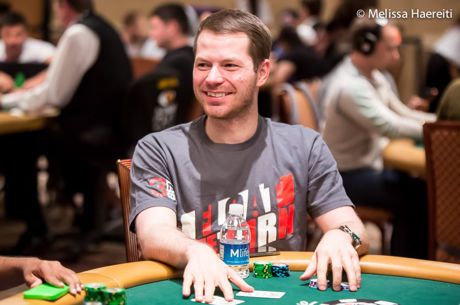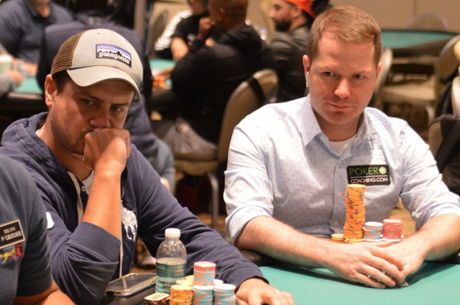Jonathan Little on How to Bluff Straightforward Players in Small Cash Games

Against the weakest, most straightforward players, do not be afraid to bluff! When they do not have an effective nut hand, they will usually fold if you apply enough pressure.
This was evidenced in a hand played by one of my students in a $1-$3 no-limit hold’em cash game. Everyone was sitting on an effective stack of $300 at a seven-handed table when the player in the hijack opened for $10. It folded around to us in the big blind and we called holding the 8♣7♦.
We then checked the Q♣J♦6♠ flop with the intention of folding if our opponent continues because we have nothing. However, the hijack checked behind and we got a free card, which came the 5♣ to give us an up-and-down straight draw.
My student knew from a prior hand that the player in the hijack didn’t bet an obvious value-bet hand. As such, we pegged the straightforward player as a bit weaker and tighter. So, what can we deduce from that here? Well, he probably has nothing, but in the worst-case scenario has a bad queen or jack, maybe Qx10x or AxJx. The question is, will a hand like that fold to enough aggression?
"If you think you can get your opponent to fold a queen or jack by the river, then we should be betting the turn normally and blasting the river big."
If they have a marginal made hand, which there’s a good chance they do, they’re not going to fold to a turn bet. Does that mean we should not bluff the turn? Not necessarily, not if we’re willing to ask how they’d play it on the river. If you think you can get your opponent to fold a queen or jack by the river, then we should be betting the turn normally and blasting the river big.
If you think your opponent will always call the turn and river with a queen or jacks, we should just check. If our opponent will let us check it down when they hold a queen or jack, then great. If they blast the turn, we can stick around as we have a lot of applied odds. We can go a lot of ways depending on our opponent’s tendencies.
Given what we know about our opponent here, namely that he has played rather coy in the past, I think a turn bet followed by a river blast is the way to go. My student does bet $14 and got called, which brought about the 7♠ on the river.
Now, you might be thinking since we paired the seven we have showdown value and should be looking to go check-check, but think about the range our opponent has. He probably has a queen, jack, or something like pocket nines. We lose to the vast majority of our opponent’s range. So, even though we have a made hand, a pair of sevens, we still lose to most everything our opponent could hold.
The seven actually doesn’t change much, we should still follow through with our plan to bluff. If anything, the seven completed some draws we were representing. I am going to bet, and I am going to bet a big size to get a queen or jack to fold. A lot of players will bet $30, but that’s not going to be enough. They won’t think twice about calling with a queen, but they might if you bet something like $85.
My student ends up betting $65. I think slightly bigger is probably better, but I’m ok with this bet size. You don’t want to go much smaller.
The hand played out to perfection as the player in the hijack folded the better hand by laying down the Q♥10♥. This is obviously nitty and the opponent should not be folding queen-ten, but for our hero, it’s ok to make plays that take advantage of mistakes an opponent may make, that’s how you make money in poker.
This is not a hand from a tough, high-stakes cash game. Here, we’re not concerned about balance. We’re betting big on the river as a bluff.
For a more thorough breakdown of this hand, check out my thoughts in the following video:
Jonathan Little is a professional poker player and author with over $7,000,000 in live tournament earnings. He writes a weekly educational blog and hosts a podcast at JonathanLittlePoker.com. Sign up to learn poker from Jonathan for free at PokerCoaching.com. You can follow him on Twitter @JonathanLittle.









